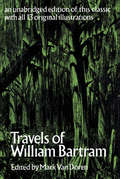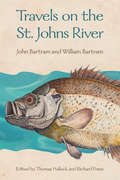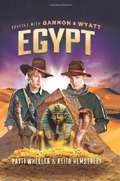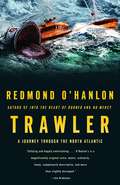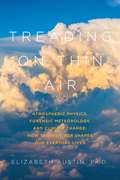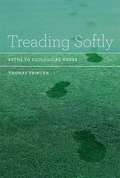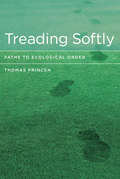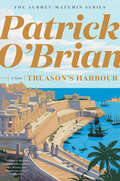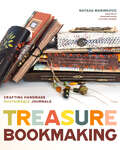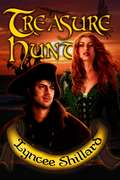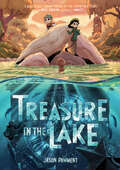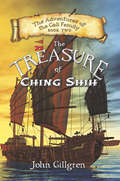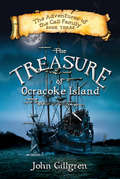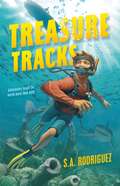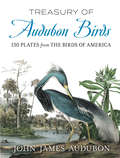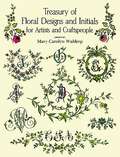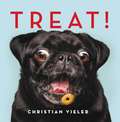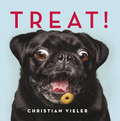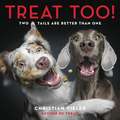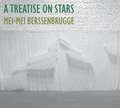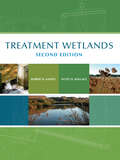- Table View
- List View
Travels of William Bartram
by William BartramFirst inexpensive, illustrated edition of early classic on American geography, plants, Indians, wildlife, early settlers. Naturalist's poetic, lovely account of travels through Florida, Georgia, Carolinas from 1773 to 1778. Influenced Coleridge, Wordsworth, Chateaubriand. "A book of extraordinary beauty..." -- New York Times. 13 illustrations.
Travels on the St. Johns River
by John Bartram William Bartram“The editors skillfully interpret the geography and natural history, and provide an extensive list of the plants and animals the Bartrams encountered. This work will appeal to naturalists and those interested in early American studies in natural history.”—Choice "Bringing together descriptions and illustrations of the St. Johns River and its characteristic flora and fauna from the golden age of natural history exploration, this book will be useful to both Bartram scholars and amateur naturalists."--Timothy Sweet, author of American Georgics: Economy and Environment in American Literature, 1580-1864 "Illustrates the unique sense of place of Florida and, in particular, the St. Johns River. Guides the reader along a transcendent spiritual journey that ends on the shores of ecology."--R. Bruce Stephenson, author of John Nolen, Landscape Architect and City Planner In 1765 father and son naturalists John and William Bartram explored the St. Johns River Valley in Florida, a newly designated British territory and subtropical wonderland. They collected specimens and recorded extensive observations of the plants, animals, geography, ecology, and native cultures of an essentially uncharted region. The chronicle of their adventures provided the world with an intimate look at La Florida. Travels on the St. Johns River includes writings from the Bartrams' journey in a flat-bottomed boat from St. Augustine to the river's swampy headwaters near Lake Loughman, just west of today’s Cape Canaveral. Vivid entries from John's Diary detail which tribes lived where and what vegetation overtook the river's slow current. He describes the crisp, cold spring waters tasting like a gun barrel. Excerpts from William's narrative, written a decade later when he tried to make a home in East Florida, contemplate the environment and the river that would come to be regarded as the liquid heart of his celebrated Travels. A selection of personal letters reveal John's misgivings about his son's decision to become a planter in an inhospitable pine barren with little more than a hovel as shelter, but they also speak to William's belated sense of accomplishment for traveling past his father's footsteps. Editors Thomas Hallock and Richard Franz provide valuable commentary and a modern record of the flora and fauna the Bartrams encountered. Taken together, the firsthand accounts and editorial notes help us see the land through the explorers' eyes and witness the many environmental changes the centuries have wrought.
Travels with Gannon and Wyatt: Egypt
by Patti Wheeler Keith HemstreetOn their quest to find the long lost tomb of the Pharaoh Cleopatra, Gannon and Wyatt find that they aren't the only ones interested in Cleopatra's secrets. Ruthless tomb robbers are hot on their heels, and the brothers must brave venomous snakes, deadly booby traps, and ancient curses as they find themselves on the verge of a magnificent discovery that could rewrite history.
Trawler
by Redmond O'HanlonHaving survived Borneo, Amazonia, and the Congo, the indefatigable Redmond O'Hanlon sets off on his next adventure: his own perfect storm, in the wild waters off the northern tip of Scotland. Equipped with a fancy Nikon, an excessive supply of socks, and no seamanship whatsoever, O'Hanlon joins the commercial fishing crew of the Norlantean, a deep-sea trawler, to stock a bottomless hull with their catch, even as a hurricane roars around them. Rich in oceanography, marine biology, and uproarious humor, Trawler is Redmond O'Hanlon at his finest.
Treading on Thin Air: How Weather Shapes Our Everyday Lives
by Elizabeth AustinWeather is an inescapable part of our daily lives, from the nuances of air travel to the breadth of human history. Our past, present, and future is intimately rooted is weather and climate. Weather, water, and climate. How we feel, how productive we are, even our sheer existence, depends on these three things. The United States economic activity varies annually by 1.7% due to weather--that is more than $500 billion dollars each year! Weather applications on mobile devices are the second most popular 'apps' - more popular than social networking, maps, music,and news. In Treading on Thin Air, Dr. Elizabeth Austin, a world-renowned atmospheric physicist, reveals how the climate is intimately tied to our daily lives. The effects and impacts of weather on humans, society and the planet are changing with the times. Dr. Austin will demystify climate change, revealing what is really happening with our climate and why, whether it is El Nino, tornadoes, floods or hurricanes. Weather and society are at its most fascinating at extremes, and as Dr. Austin is one of a handful of forensic meteorologists around the globe. She has been called upon to investigate plane crashes, murders, wildfires, avalanches, even bombing cases. Drawing upon her rich experiences, Austin's Treading on Thin Air promises to be an enlightening and informative journey through the wild word of weather.
Treading Softly: Paths to Ecological Order
by Thomas PrincenAuthor says we need a new normal, a new ecological order that is actually economical with resources, that embraces limits, that living as a long-term relationship with the planet, a connection to fresh, free-flowing water, fertile soil, and healthy food.
Treading Softly: Paths to Ecological Order
by Thomas PrincenHow to imagine and then realize an ecological order based on living within our biophysical means. We are living beyond our means, running up debts both economic and ecological, consuming the planet's resources at rates not remotely sustainable. But it's hard to imagine a different way. How can we live without cheap goods and easy credit? How can we consume without consuming the systems that support life? How can we live well and live within our means? In Treading Softly, Thomas Princen helps us imagine an alternative. We need, he says, a new normal, an ecological order that is actually economical with resources, that embraces limits, that sees sustainable living not as a “lifestyle” but as a long-term connection to fresh, free-flowing water, fertile soil, and healthy food. The goal would be to live well by living well within the capacities of our resources. Princen doesn't offer a quick fix—there's no list of easy ways to save the planet to hang on the refrigerator. He gives us instead a positive, realistic sense of the possible, with an abundance of examples, concepts, and tools for imagining, then realizing, how to live within our biophysical means.
Treason's Harbour (Aubrey/Maturin Novels #Vol. Book 9)
by Patrick O'Brian<P> All Patrick O'Brian's strengths are on parade in this novel of action and intrigue, set partly in Malta, partly in the treacherous, pirate-infested waters of the Red Sea. While Captain Aubrey worries about repairs to his ship, Stephen Maturin assumes the center stage for the dockyards and salons of Malta are alive with Napoleon's agents, and the admiralty's intelligence network is compromised. Maturin's cunning is the sole bulwark against sabotage of Aubrey's daring mission.
Treasure Bookmaking: Crafting Handmade Sustainable Journals
by Natasa MarinkovicDivine Diary DIYs for the Innovative Crafter#1 Best Seller in Book Making & Binding and ScrapbookingWith journal making projects, book binding techniques, and journal prompts, this Treasure Book Making guide has everything you need. Get ready to create personal journals by hand easily—without any extra book-binding tools!An affordable craft. Hobbies tend to require a big investment, but Author Natasa Marinkovic, creator of popular YouTube channel Treasure Books, focuses on upcycling the available materials around us. Learn how to make beautiful journals—without purchasing book-binding tools, use what you have! With the things you have at home, create projects that are both useful and beautiful. Fall into the world of book binding. This junk-journaling-how-to gives readers all of the details on how to make a book through step-by-step creative projects that will save you space and get rid of house clutter. This diary DIY is the ultimate space for your creativity to bloom and grow! Inside, you'll find:Illustrations and tips to jumpstart your creativity on DIY books Easy-to-follow instructions to structure and make a book for journaling and scrap keeping Lists of accessible materials to use—such as cereal boxes, scraps of paper, and everyday items like buttons and moreIf you enjoyed learning how to craft a book in Making Handmade Books, Hand Bookbinding, or journaling books like My Soul Pages, you’ll love Treasure Book Making.
Treasure from the Sea (Fountas & Pinnell LLI Red #Level J)
by Jacqueline AdamsAround the world, people hunt for a treasure called sea glass. This treasure used to be trash!
Treasure Hunt
by Lyncee ShillardDeLaney Black Heart is the captain of The Gypsy Princess, the most feared pirate ship on the Cannequ seas, until recently. Her long standing enemy, Falken Sands, is making good on his threat to ruin her. She is in desperate need of a large bounty to soothe her crew and reclaim her title.Raven Kinsley is a treasure hunter. He offers DeLaney the chance to redeem herself. Only their history is stopping DeLaney from jumping on the offer. Raven abandoned her a year earlier and disappeared.Left with no other choice, DeLaney agrees to Raven's commission. They begin their journey to claim the lost treasure of Midas, but soon trouble surrounds them. Raven and DeLaney combine forces to battle gryphons, the possessed Falken Sands, and other creatures.DeLaney tries to convince herself what she feels for Raven is born out of battle, not love. Raven knows he loves DeLaney, but until an old enemy is beaten, he can't make his claim on her heart.As secrets are revealed, they realize this is more than a mere treasure hunt. It's a battle for their lives.
Treasure in the Lake
by Jason PammentGrand adventures stories often begin where you least expect them…Iris knows this because she’s read them all. However, as a thirteen-year-old stuck in the tiny town of Bugden, real adventure seems like a distant dream. But when Iris and her best friend, Sam, stumble upon an unusually dry river on the outskirts of town, they’re led to a discovery beyond anything Iris has ever read about: a hidden city and a forgotten tale of friendship.In Jason Pamment's middle grade graphic novel debut, perfect for fans of Hilda and This Was Our Pact, can Iris and Sam uncover the truth in time to keep their own friendship afloat, or will history repeat itself and pull them apart forever?An ALSC Graphic Novel Reading List Title
Treasure in the Trees
by Christopher ChengTreasure in the Trees explores the beauty of nature and science.
The Treasure of Ching Shih
by John GilgrenChing Shih was the most powerful pirate in China. She stole everything—from jewels, to people, to opium. In 1844, Ching Shih and her husband created a secret plan to move her fortune from China to Hawaii for safekeeping, even as a rival pirate fleet plotted to intercept her treasure ships. But the forces of nature intervened and in a mighty storm the treasure was lost before reaching safety. Almost two centuries later, a mysterious Mr. Chang visits California to request the scuba-loving Cali family’s help in locating Ching Shih’s treasure. The Calis travel to Hawaii and agree to dive for the treasure, but danger awaits. Faced off against a modern-day villain as ruthless and cunning as Ching Shih herself, the Cali family races to find a treasure far more sinister and deadly than anyone ever imagined.
The Treasure of Ocracoke Island
by John GilgrenIn the early 1700s, Ocracoke Island, located at the tip of North Carolina’s Outer Banks, was the home of Edward Teach, better known as Blackbeard, the infamous pirate. His reign of terror lasted a mere two years, but during this time he ruled the seas from the Outer Banks to the Caribbean. The end came in 1718 when the British attacked and killed Blackbeard in Ocracoke Bay. The British never found Blackbeard’s legendary treasure, and scuttled his ship Adventure. Blackbeard’s treasure was never found. In the spring of 1942, the world was at war. Germany U-boats patrolled the East Coast of America. One night, U-402 spotted the Soviet tanker Ashkhabad near the Outer Banks enroute from Cuba to Maryland to collect fuel. U-402 fired two torpedoes hitting and sinking the Ashkhabad, which carried a hidden footlocker of gold meant to pay the U.S. for war supplies. Twenty years later, the Russians needed that gold to finance the expansion of the Soviet empire. They dispatched a pair of incompetent spies to locate the Ashkhabad and retrieve the gold. Half a century later, Snail Cali and his family are enjoying an evening at home when a huge man sporting a long flowing beard barges into their house threatening them and demanding that they find his treasure. Later that night, Snail’s mother, sisters, girlfriend, and godmother are kidnapped. Snail, along with his father Carmine, friend Tommy Osawa, and NCIS Special Agent Moki Loo Tsing frantically search for the women. Their only clue is a poetic riddle left as a phone message by the bearded man.
Treasure Tracks
by S.A. RodriguezA debut middle-grade adventure about a young teen who goes on a treasure hunt for undersea riches to help his ailing abuelo.Twelve-year-old Fernando “Fin” joins his grandfather on a secret quest to find a long-lost treasure swept to sea. But when their first mission takes a near-deadly turn, leaving his abuelo weak and unable to speak, Fin’s left to navigate the hunt alone. Well, not exactly alone—his boring, totally unadventurous dad agrees to help out. With danger lurking at every turn, Fin dives into the mission in order to save Abuelo's life. But between Dad’s constant worrying, unwanted diving babysitters, and harrowing encounters in the deep sea, the boy finds himself in a race against time to locate the treasure. If he can’t succeed? He fears he might lose Abuelo for good.S.A. Rodriguez's Treasure Tracks is a fast-paced story filled with heart and humor about the bonds of family, the meaning of a legacy, and most of all, the discovery of true treasure.
Treasury of Audubon Birds: 130 Plates from The Birds of America
by John James AudubonThe most famous work by America's premier ornithological artist, The Birds of America presented 435 large, hand-colored engravings depicting more than 1,000 birds of 489 species. John James Audubon's historic volume, completed in 1838, was succeeded by the smaller lithographic illustrations of the much more affordable yet highly collectible octavo edition. This new collection contains 130 select plates from the octavo version, featuring splendid, scrupulously accurate portraits of the snowy egret, wild turkey, brown pelican, screech owl, and more. The birds are identified by both the common names used by Audubon and their modern equivalents. The culmination of the nature illustrator's career, these stunning works offer realistic portrayals of American birds in elegantly spare settings. An informative Introduction outlines the artist's life and his work and provides background on the creation of the octavo edition.
Treasury of Decorative Floral Designs (Dover Pictorial Archive)
by DoverThe timeless beauty of elegant floral designs has made them prime favorites among artists and craftspeople. This rich harvest of blossoms, vines, and other floral decorations has an unlimited variety of applications, allowing them to serve equally well as individual motifs or as running borders.More than 300 delicately rendered motifs, all reproduced from a rare nineteenth-century catalog, feature a profusion of sprays, branches, and clusters. Commercial artists and designers will want them for projects calling for floral centerpieces, stripes, and allover patterns. Craftworkers will find the designs suitable for embroidery, textile patterns, woodworking, and other crafts.
Treasury of Floral Designs and Initials for Artists and Craftspeople (Dover Pictorial Archive)
by Mary Carolyn WaldrepYou'll find a thousand different uses for this practical archive of royalty-free designs with a floral theme. It includes over 700 wonderfully graceful and imaginative designs featuring flowers, leaves, and vines in delicate interlacements. Most incorporate elaborately embellished letters, initials, monograms, and names.Needleworkers, fabric painters, and other craftworkers will love browsing through these pages for the perfect design to personalize towels, handkerchiefs, bed linens, clothing, and more. Textile designers, graphic artists, and calligraphers will also find the volume brimming with useful ideas and models for creating rich floral designs, illustrated letters, borders, and frames.
Treat!
by Christian VielerWho's a good dog? In the tradition of bestselling photography books like Underwater Dogs and Shake comes an adorable and hilarious collection of dog photographs capturing our best friends at one of their favorite moments--treat time. Photographer Christian Vieler caught these eager dogs anticipating, catching--some more successfully than others--and enjoying a scrumptious tidbit.From a tenacious terrier to a goofy golden retriever, these often hilarious and surprisingly beautiful photographs capture each dog's unique personality in a way any dog owner will recognize and that all dog lovers will enjoy!
Treat!: DOGS CATCHING TREATS: THE FUNNIEST DOG BOOK OF THE YEAR
by Christian VielerAs seen in the Daily Mail, the Times and the Telegraph Who's a good dog?Photographer Christian Vieler caught these eager dogs anticipating, catching, and enjoying a scrumptious tidbit - some more successfully than others.From a tenacious terrier to a goofy golden retriever, these often hilarious and surprisingly beautiful photographs capture each dog's unique personality in a way any dog owner will recognize and that all dog lovers will enjoy!
Treat Too!: Two Tails Are Better Than One
by Christian VielerFrom the bestselling author of Treat! comes the second ulti-mutt collection of lovable and hilarious photographs of dogs vying for treats -- now with double the pups for even more paw-some fun! Photographer Christian Vieler is an online sensation for pup-arazzi worthy photos of dogs. In Treat! he captured 60 dogs anticipating, catching -- some more successfully than others -- and enjoying a scrumptious snack. In Treat Too, Vieler brings twice the pups, and twice the fun. From a pair of tenacious terriers to a duo of goofy golden retrievers, these hilarious and paws-itively beautiful photographs capture each dog's unique personality in a way any dog owner will recognize and enjoy! Purrfect for the animal lover in your life, these adorable photos will have you rolling over and howling with laughter and love.
A Treatise on Stars
by Mei-Mei BerssenbruggeAn ethereal new collection that is “visceral with intellection” (David Lau) Mei-mei Berssenbrugge’s A Treatise on Stars extends the intensely phenomenological poetics of “The Star Field” in Empathy, which appeared over thirty years ago. The book is structured as a continuous enfolding of poems, each made up of numbered serial parts, their presiding poetic consciousness moving from the desert arroyo of New Mexico to the white-tailed deer of Maine and between conversations with daughter, husband, friends, pets (corn snake and poodle), and a woman, or star-visitor, beneath a tree who calls “any spirit in matter … star-walking.” These are poems of deep listening and patient waiting, open to the channeling of daily experience, to gestalt and angel, dolphins and extraterrestrials. Here, family is a type of constellation and “thought is a form of organized light.” All our senses are activated by Berssenbrugge’s light-absorbing lines, lines that map a geography of interconnected intelligence—interdimensional intelligence—that exists in all sentient objects and sustains us. This is not new age poetry but poetry for a new age, rigorous of thought and grounded in the physical world where “days fill with splendor, and earth offers its pristine beauty to an expanding present.”
Treatment Wetlands
by Scott Wallace Robert H. KadlecCompletely revised and updated, Treatment Wetlands, Second Edition is still the most comprehensive resource available for planning, designing, and operating wetland treatment systems. It provides engineers and scientists with a complete reference source that includes: detailed information on wetland ecology, design for consistent performance, site specific studies, estimated costs, construction guidance and operational control through effective monitoring. Case histories of operational wetland treatment systems illustrate the variety of design approaches presented allowing readers to tailor them to the needs of their projects.
